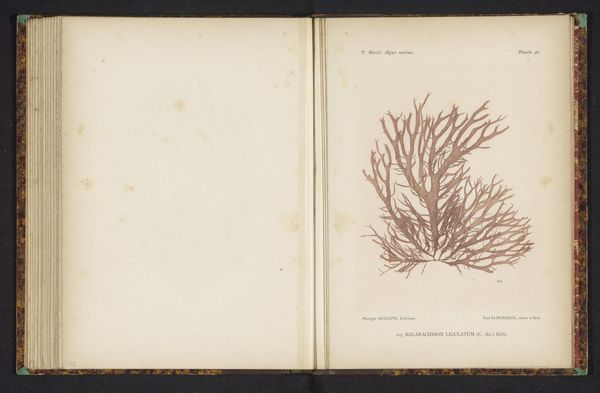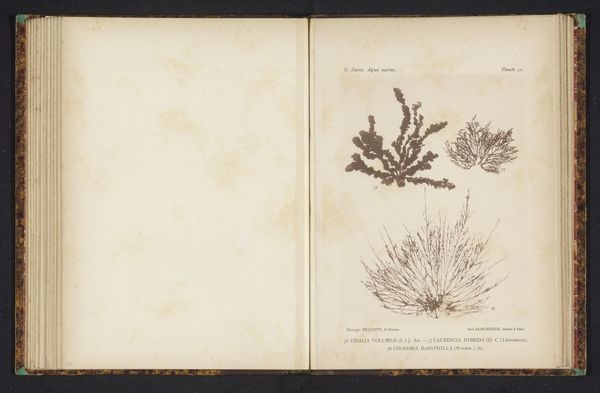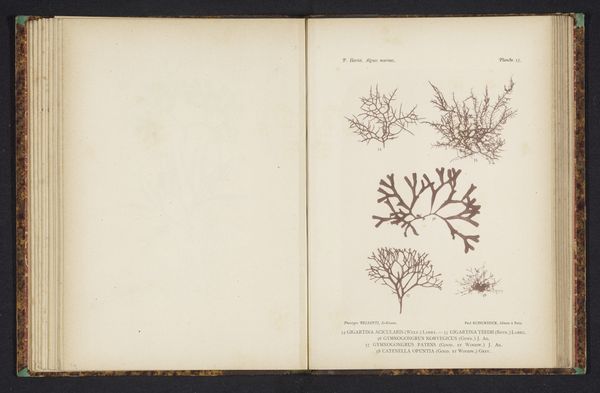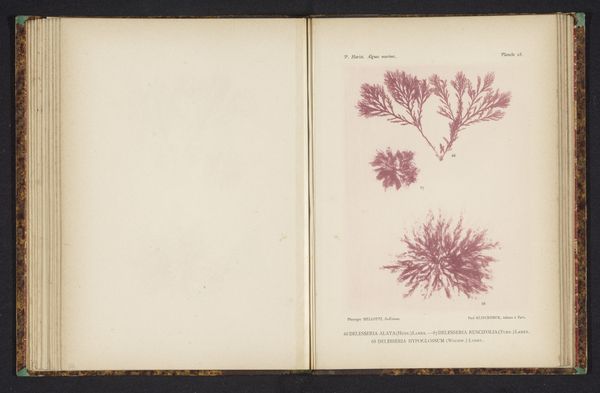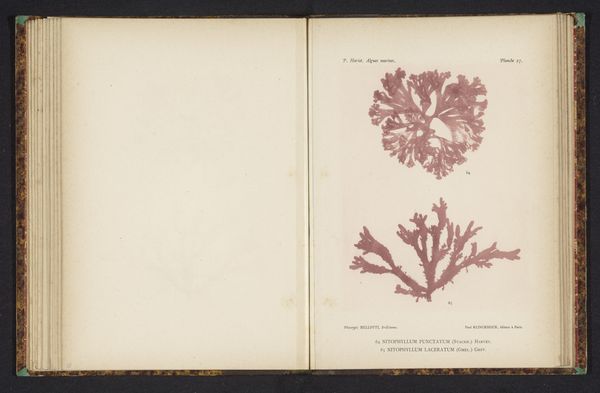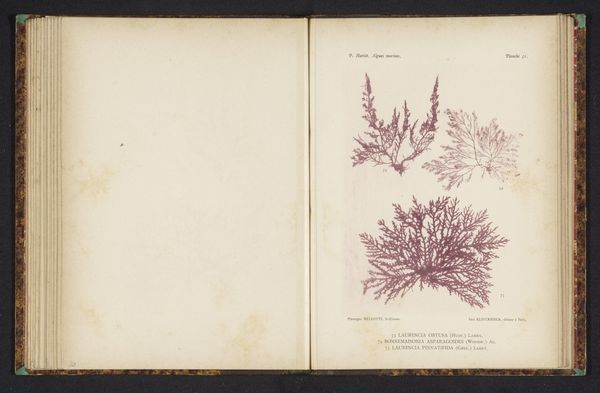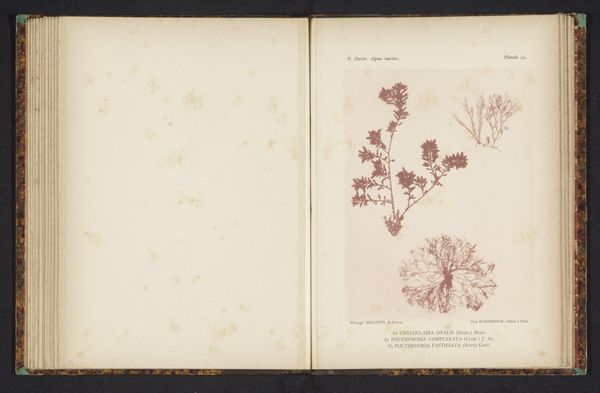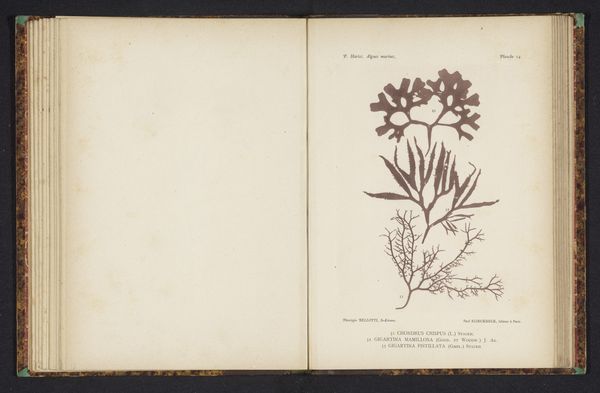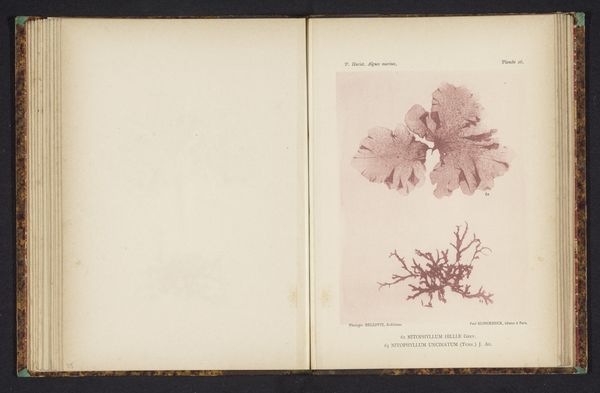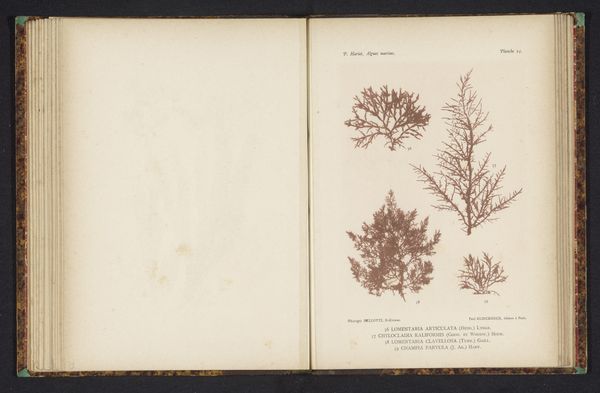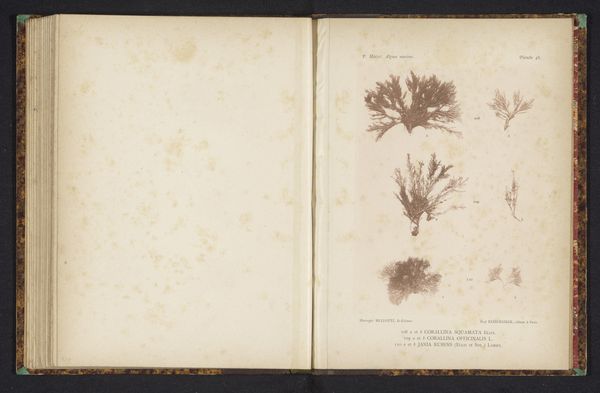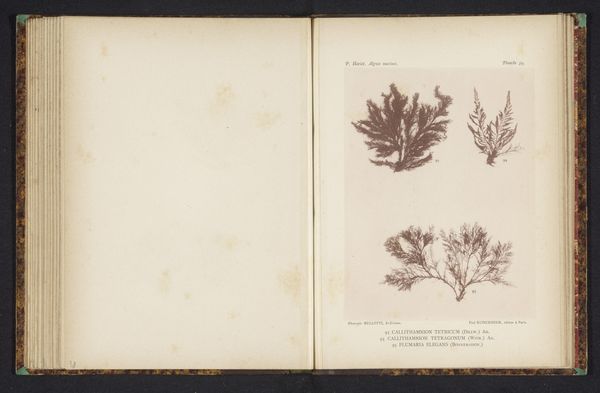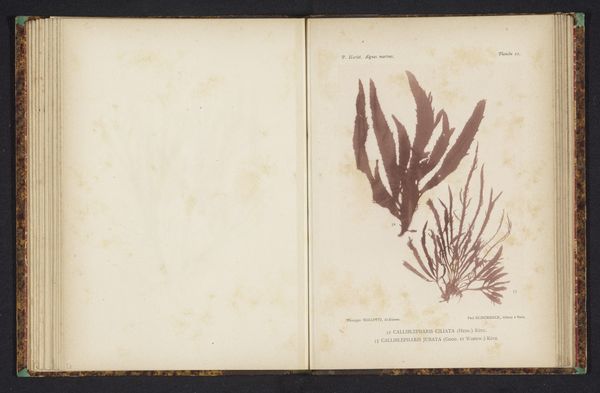
drawing, paper, watercolor, ink
#
drawing
#
paper
#
watercolor
#
ink
#
coloured pencil
#
line
#
sketchbook drawing
#
botanical art
#
realism
Dimensions: height 161 mm, width 119 mm
Copyright: Rijks Museum: Open Domain
Curator: This is an illustration from before 1892 called "Roodhoorntjeswier," created by an anonymous artist, employing watercolor, ink, and drawing on paper. Editor: Immediately, the stark delicacy strikes me. The coral, or what appears to be coral, has a kind of spectral elegance against the aged page. It speaks to vulnerability and the ephemeral nature of organic forms. Curator: The "Roodhoorntjeswier," also known as Ceramium rubrum, or red algae, is meticulously rendered with a linework aesthetic. This was created for scientific, rather than aesthetic purposes. Editor: And I think that objective lens matters immensely. These kinds of representations also were a tool of colonial projects – ways of codifying and possessing knowledge about the natural world. The scientific process becomes a mechanism for control. It's fascinating how seemingly benign botanical illustrations can be situated within that kind of historical context. Curator: Precisely. Think too of the iconographic symbolism of marine life – throughout various cultures, it can be associated with adaptability, resilience, and the subconscious depths of the psyche. Red itself carries connotations of life force and passion, or even warning and danger. Editor: Yet, isn’t there a tension here? While red signifies vitality, the rendering of this specimen on paper, outside of its life-giving aquatic environment, speaks of separation, of an attempt to freeze it in time and dissect it. Curator: I suppose it is also fair to wonder who would have consumed these images at the time, or been given access. Given the cultural milieu, there certainly could have been spiritual readings or considerations from more occult practices, though the artist may not have been involved. Editor: It serves as a potent reminder of how we continue to relate to the natural world, this constant tension between reverence and our impulse to dissect and control it. Curator: For me, seeing this kind of rendering offers a powerful view into the history of knowledge, the ways we catalogue and contemplate the natural world and how our artistic mediums translate what is seen, perceived, and internalized. Editor: Absolutely. It's a delicate reminder of the complexities inherent in seeing.
Comments
No comments
Be the first to comment and join the conversation on the ultimate creative platform.
